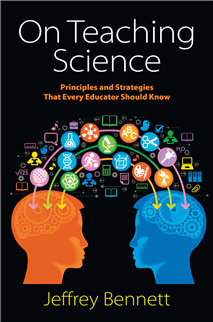All Resources
Book Chapter
Gravity pulls the air molecules toward the ground, and the molecules push on the ground. This pushing is called air pressure or atmospheric pressure. In this chapter’s experiments, students will learn about air pressure and the meaning of terms suc...
Book Chapter
All electrical gadgets and gizmos need an electric current to work. To make it easier to learn about and make circuits, you will need to know the symbols for some components. In this chapter, you will learn about these symbols and then plan and build...
Book Chapter
A magnet attracts objects made of iron and this phenomenon called magnetism has many uses. In this chapter, you will explore and experiment with magnetism in different ways, including bar magnet, magnetic field, magnetic globe, and electromagnet. Tea...
Book Chapter
Energy is everywhere in several different forms and can be moved from place to place in many ways. In these experiments, you will find out more about what energy is, how it can be transported, and how is it possible to transform energy to different f...
Book Chapter
In everyday life we often talk about pressure—high pressure and low pressure. We speak of the pressure in car tires, atmospheric pressure, pressure-sealed containers, pressure chambers, and so on. These are just a few of the ways we encounter press...
Book Chapter
Thermodynamics is the physics of heat, mechanical energy or work, and the conversion of one into the other. All systems follow the laws of thermodynamics and since almost all energy production is based on thermodynamics, it is important to understand...
Book Chapter
Energy is an essential part of all branches of physics. In mechanics, energy appears as both potential and kinetic energy. In this chapter, the experiments examine the conservation of energy and how energy can change from one type to another. Teacher...
Book Chapter
Color theory is an area of physics that can explain how the appearance of colors changes when colors are mixed, for example on a computer screen or with a printing press. Visible light can be divided into different ranges of wavelengths, which we see...
Book Chapter
Resonance—a system’s tendency to oscillate at greater amplitudes at certain frequencies—is a common phenomenon in physics. The explorations in this chapter will define how resonance occurs. Teacher background information, assessment, safety not...
Book Chapter
Buoyancy is a phenomenon that occurs not only in water but also in the atmosphere. The effect of buoyancy is easily felt in water. A hot air balloon rises up in the air because of a buoyant force from the air around it and the principle of buoyancy c...
Book Chapter
The concept of angular momentum can be related to linear momentum. The difference is that while linear momentum occurs with motion in a straight line, angular momentum applies to circular motion. The observations in this chapter cover the law of cons...
Book Chapter
Magnetism is a well known physics phenomenon that is used, for example, in computers for magnetic recording, in Maglev trains, or for holding notes on a refrigerator door. Magnetism is a phenomenon in which the magnetic materials interact with one an...
Book Chapter
Electromagnetic induction is the basis for producing energy in our society. This phenomenon is used in wind generators, hydroelectric generators, and nuclear power plants, as well as in metal detectors, induction brakes, and transformers. In this cha...
Book Chapter
In this chapter, you will find explorations on gadgets that are very interesting and illustrative but that do not fit into the other chapters. However, many of these gadgets complement the explorations in earlier chapters. Teacher background informat...
Acquired Book
On Teaching Science is a short, practical guide to key principles and strategies that will help students learn in any subject at any level, but with special focus on the so-called STEM (science, technology, engineering, and mathematics) subjects....





